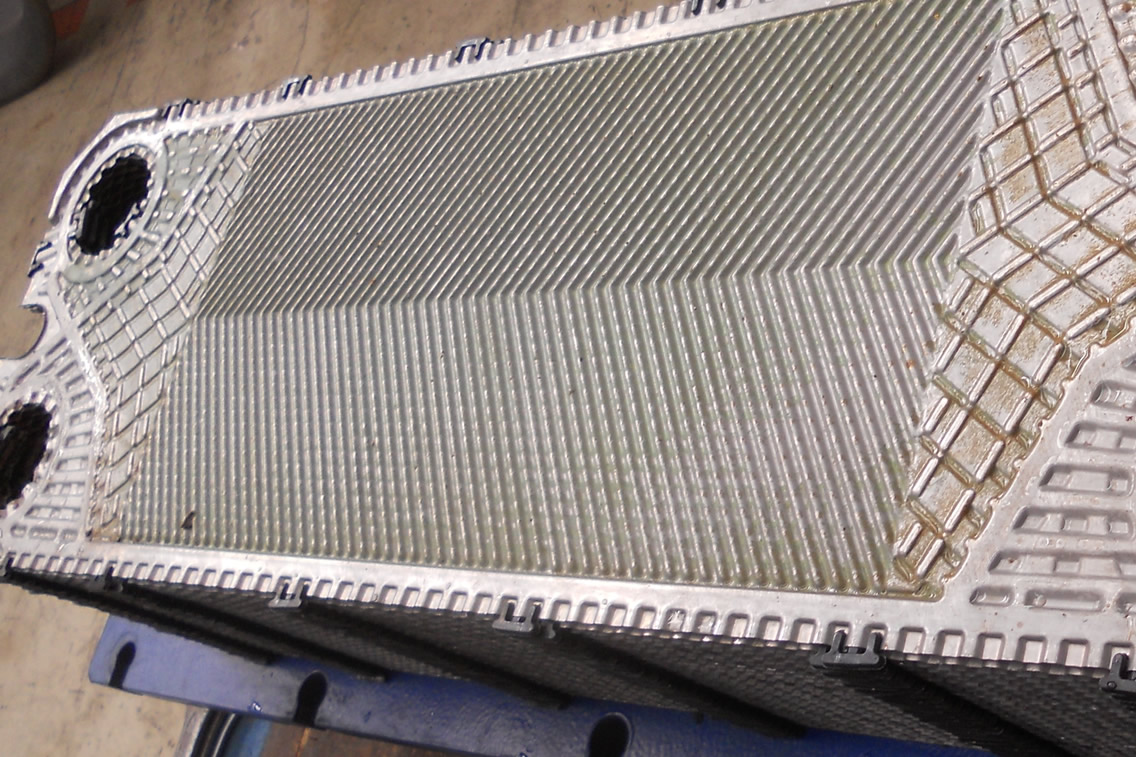We receive many heat exchangers that need cleaning. To clean them, you must be familiar with them and know how they work in order to provide the best possible service. We shall explain it all here:
They exchange heat between hot and cold fluids through corrugated plates.
The liquid that passes through the heat exchanger is divided equally based on the number of plates. Every two plates form a flow channel through which portions of the liquid flow.
Thanks to this system, the flow speed increases; this reduces the risk of incrustations forming while also optimising the exchange of heat to the point that the fluid will achieve its highest rated temperature as it reaches the end of each plate.
To clean and sanitise this equipment, it has to be disassembled. We use the interior measurements as reference points and ensure the same torque during the final assembly.
Once disassembled, all the parts are pre-washed with hot water. Then, the plates undergo an ultrasonic cavitation process. This consists in generating continuous low and high-pressure points in the liquid, which results in the micro-brushing of the parts that removes any impurities, including the areas that are most difficult to reach.
After that, the plates undergo a descaling procedure and are once again rinsed with hot water to complete the cleaning process.
The frames are also pre-washed, subjected to the ultrasonic cavitation process to remove traces of rust and are then polished and painted.











